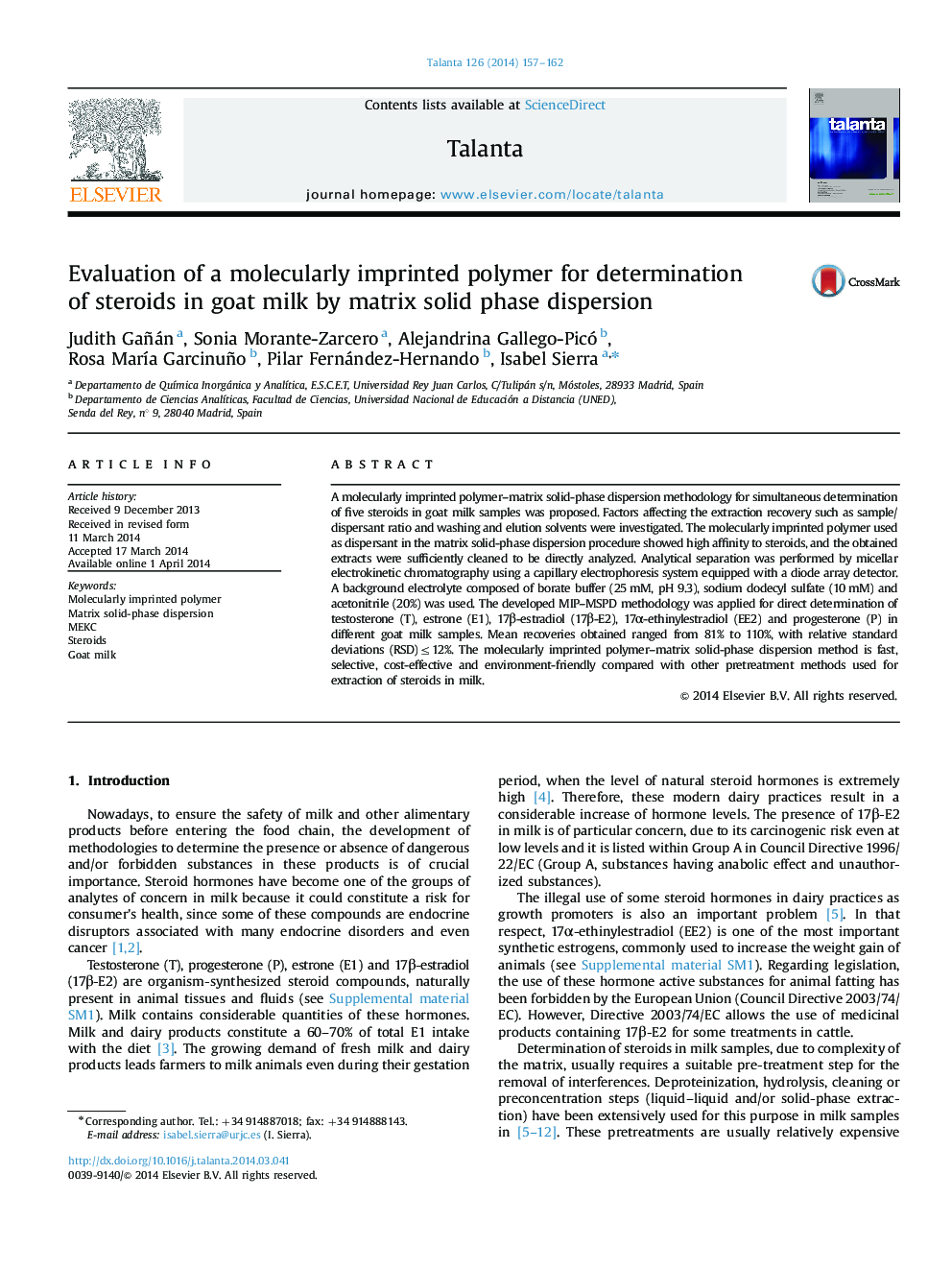| Article ID | Journal | Published Year | Pages | File Type |
|---|---|---|---|---|
| 1242286 | Talanta | 2014 | 6 Pages |
•MEKC–DAD has been applied for the first time to the analysis of steroids in milk.•A MIP was satisfactorily used as selective solid support for MSPD in steroids analysis from milk samples.•Mean recoveries for the target steroids ranged from 81% to 110%, with RSD≤12% under optimized conditions.
A molecularly imprinted polymer–matrix solid-phase dispersion methodology for simultaneous determination of five steroids in goat milk samples was proposed. Factors affecting the extraction recovery such as sample/dispersant ratio and washing and elution solvents were investigated. The molecularly imprinted polymer used as dispersant in the matrix solid-phase dispersion procedure showed high affinity to steroids, and the obtained extracts were sufficiently cleaned to be directly analyzed. Analytical separation was performed by micellar electrokinetic chromatography using a capillary electrophoresis system equipped with a diode array detector. A background electrolyte composed of borate buffer (25 mM, pH 9.3), sodium dodecyl sulfate (10 mM) and acetonitrile (20%) was used. The developed MIP–MSPD methodology was applied for direct determination of testosterone (T), estrone (E1), 17β-estradiol (17β-E2), 17α-ethinylestradiol (EE2) and progesterone (P) in different goat milk samples. Mean recoveries obtained ranged from 81% to 110%, with relative standard deviations (RSD)≤12%. The molecularly imprinted polymer–matrix solid-phase dispersion method is fast, selective, cost-effective and environment-friendly compared with other pretreatment methods used for extraction of steroids in milk.
Graphical abstractFigure optionsDownload full-size imageDownload as PowerPoint slide
